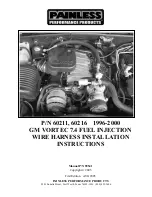
X
Tighten the five wheel bolts evenly,
following the diagonal sequence illustrated
(
:
to
A
), until all bolts are tight. Observe
a tightening torque of 110 lb-ft (150 Nm).
G
Warning!
Have the tightening torque checked after
changing a wheel. The wheels could come
loose if they are not tightened to a torque of
110 lb-ft (150 Nm).
X
Fully collapse the jack to storage position,
see (
Y
page 272).
X
Store the jack and the other vehicle tools
in the designated storage space.
For information on storing the spare wheel
after it has been replaced by a regular road
wheel, see (
Y
page 272).
i
The damaged road wheel cannot be
stored in the spare wheel well under the
cargo compartment floor. It should be
transported in the cargo compartment
wrapped in a protective wrap.
i
USA only:
Do not restart the tire inflation pressure
monitor until a full size wheel/tire with
functioning sensor has been placed back
into service on the vehicle.
MOExtended system
The MOExtended system allows you to
continue driving your vehicle even if there is
a total loss of pressure in one or more tires.
You may only use the MOExtended system in
conjunction with the tire pressure loss
warning system (
Y
page 231) or the
Advanced TPMS (
Y
page 232).
The maximum distance in emergency mode
depends on the vehicle’s load. It is 50 miles
(80 km) if the vehicle is partially loaded and
18 miles (30 km) if the vehicle is fully loaded.
The point at which the maximum driving
distance in emergency mode begins is when
the warning message appears in the
multifunction display indicating that there is
a loss of tire inflation pressure.
X
Do not exceed the maximum speed of
50 mph (80 km/h).
G
Warning!
In emergency mode, your vehicle’s driving
characteristics are diminished in such
situations as:
R
driving around curves
R
while braking
R
while accelerating rapidly
Therefore, your driving style must be adapted
accordingly. Avoid abrupt steering and driving
maneuvers, as well as driving over obstacles
(road curbs, potholes, or off-road areas). This
is especially important if the vehicle is heavily
loaded.
The emergency driving distance that can be
achieved greatly depends on the demands
placed on the vehicle. Depending on speed,
load, driving maneuvers, road conditions,
outside temperature, etc., the distance can be
significantly shorter or, if the vehicle is driven
cautiously, somewhat longer.
Do not continue driving in emergency mode if
R
you notice knocking sounds
R
the vehicle starts to shake
R
smoke develops and you smell rubber
R
ESP
®
is intervening continuously
R
you notice tears on the tire sidewalls
330
Flat tire
Practical hints
251_AKB; 4; 52, en-US
d2ureepe,
Version: 2.11.8.1
2009-03-23T09:22:52+01:00 - Seite 330
Содержание 2010 R-Class
Страница 4: ...251_AKB 4 52 en US d2ureepe Version 2 11 8 1 2009 03 23T09 22 52 01 00 Seite 2...
Страница 36: ...34 251_AKB 4 52 en US d2ureepe Version 2 11 8 1 2009 03 23T09 22 52 01 00 Seite 34...
Страница 220: ...218 251_AKB 4 52 en US d2ureepe Version 2 11 8 1 2009 03 23T09 22 52 01 00 Seite 218...
Страница 360: ...358 251_AKB 4 52 en US d2ureepe Version 2 11 8 1 2009 03 23T09 22 52 01 00 Seite 358...
Страница 361: ...359 251_AKB 4 52 en US d2ureepe Version 2 11 8 1 2009 03 23T09 22 52 01 00 Seite 359...
Страница 362: ...360 251_AKB 4 52 en US d2ureepe Version 2 11 8 1 2009 03 23T09 22 52 01 00 Seite 360...
















































